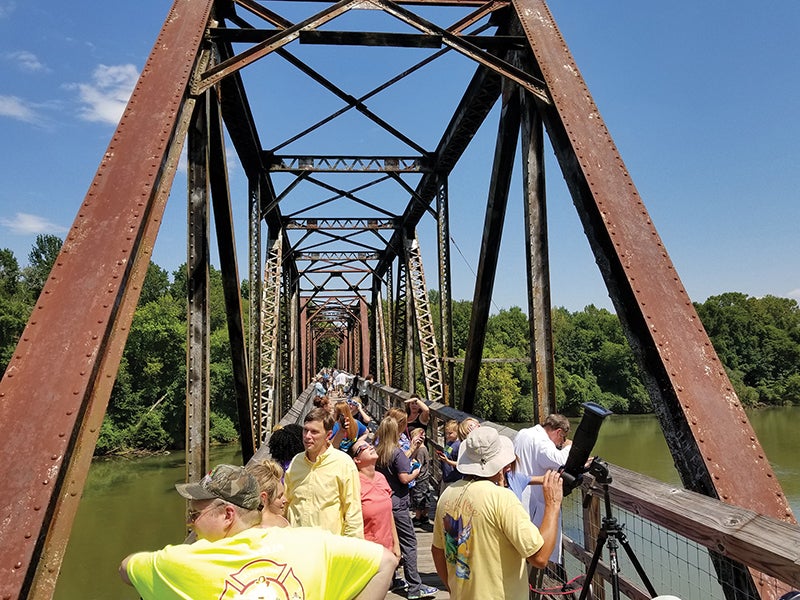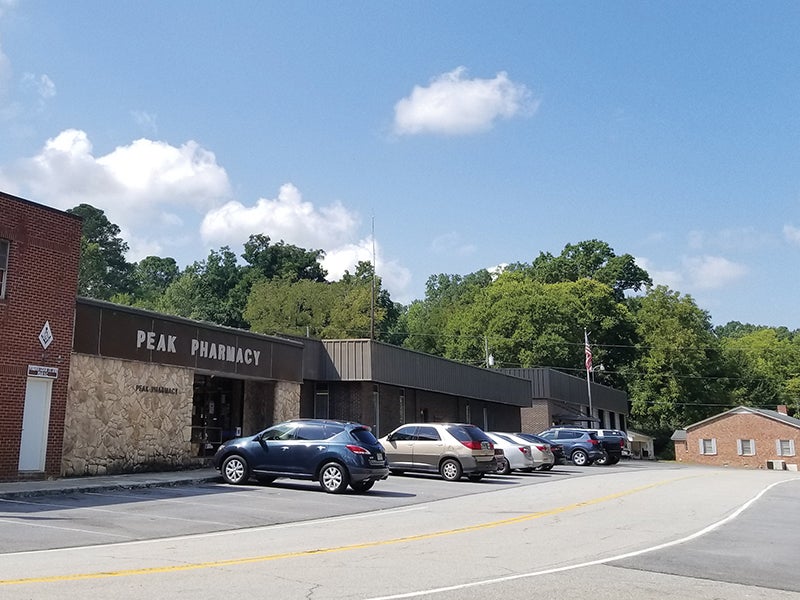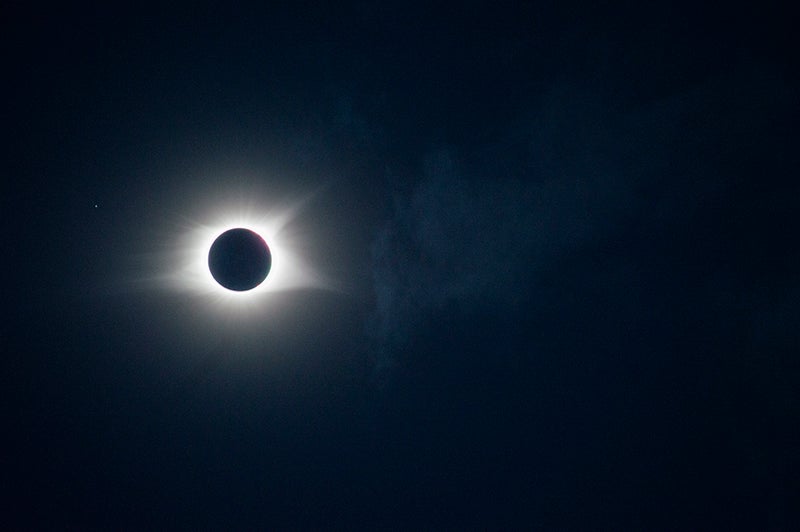Solar eclipse draws a crowd to South Carolina town
Published 12:02 am Tuesday, August 22, 2017
PEAK, S.C. — For about two minutes Monday, a group of 100 people experienced an unforgettable moment over the Broad River.
As a solar eclipse neared totality, the crowd stood on an old railroad bridge stretching between Newberry and Fairfield counties in rural South Carolina. Daylight dimmed to dusk. Cicadas started chirping. The temperature dropped. At about 2:40 p.m., puffy clouds floating above the Broad River began turning pink as if it were sunset.
Then came the moment the crowd had gathered to see — a total solar eclipse. A remaining sliver of the sun disappeared behind the moon and a full corona appeared. The crowd cheered with excitement.
Bennie Brawley, who traveled to Broad River bridge from about 10 miles away, brought a full set of camera equipment, a solar filter and a drone to capture the moment.
“It’s like Christmas,” Brawley joked.
For some gathered at the Broad River bridge Monday, it was their first time witnessing a solar eclipse. Others, including Brawley, remember watching an eclipse as children. That eclipse — on March 7, 1970 — was visible in North America and Central America. Its path of totality — where the total solar eclipse is visible — stretched up the East Coast.
On Monday, the path of totality started in Oregon, stretched across the middle of the United States and ended on the South Carolina coast.
The town of Peak’s opportunity to catch Monday’s solar eclipse started at roughly 1:10 p.m., when the moon began nibbling at the edge of the sun. Visitors slowly streamed onto the Broad River bridge, setting up camping chairs or blankets and waiting for totality.
In nearby Peak, which has a population fewer than 100 people and a total land area less than a square mile, it was business as usual for the doctor’s office and pharmacy that comprise the town’s core. Sure, there was an eclipse, but it wasn’t the biggest news in town.
Members of the Peak coffee club, which meets every morning except Sunday, said the halt of construction on a nearby nuclear power plant would have a larger effect on local business than the additional visitors buying refreshments at the pharmacy, which fills an average of 200 prescriptions per day.
Earlier this summer, thousands of people building two nuclear reactors at the Virgil C. Summer Nuclear Station lost their jobs when South Carolina Electric and Gas and Santee Cooper halted construction of the project. Finishing the project had become “prohibitively expensive,” the company said.
Mary Jo Dyches, whose family runs Peak Pharmacy, said business could be affected by the halt to construction at the nuclear plant. Dyches said the store serves customers in Newberry County and Fairfield County, where the nuclear plant is located.
Dyches introduced me to the Peak coffee club, which invited me to a barbecue chicken dinner the Sunday before Labor Day. How’s that for southern hospitality?
By the time I talked to the coffee club, most of its members had left. A half dozen people remained. They weren’t particularly excited about the eclipse. A few of the half dozen club members I spoke with said they hadn’t purchased glasses.
Members of the club said a local church planned to host an eclipse-watching party. The club’s members, which included Peak Pharmacy founder Joe Smith, jokingly said they planned to crash every eclipse-watching party in town.
Meanwhile, eclipse watchers filled the Broad River bridge. Several groups of people also walked across the railroad bridge over the Broad River to buy refreshments at Peak Pharmacy.
Among the crowd were people who traveled just a few miles and a few hours.
The crowd swelled to more than 100 as the moon began shadowing the sun. A group of people dove into the river and watched the eclipse from a series of rocks rising out of the water. The doctor’s office in Peak — called the Pinner Clinic — temporarily closed to let its employees watch the eclipse.
With a crowd waiting on the Broad River, the moon took several hours to traverse the sun. Totality lasted roughly 2 minutes and 20 seconds.
At times, partly cloudy skies threatened to obscure the view. But just before totality, the skies cleared just enough for the crowd to experience a full solar eclipse.
For those planning ahead, the next total solar eclipse occurs April 8, 2024. Its path will cross Central America and North America. In the U.S. the path of totality will starts Texas and moves northeast, ending in Maine.
Contact reporter Josh Bergeron at 704-797-4246.






